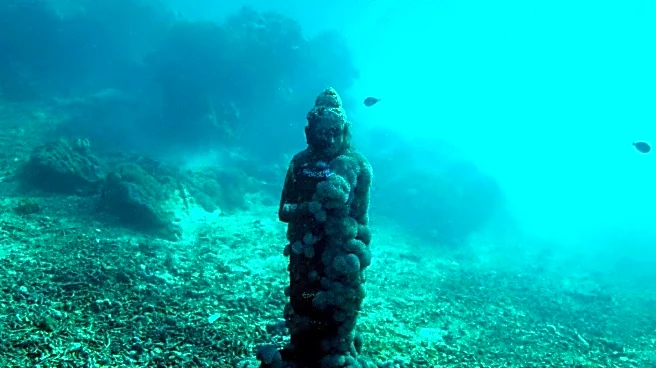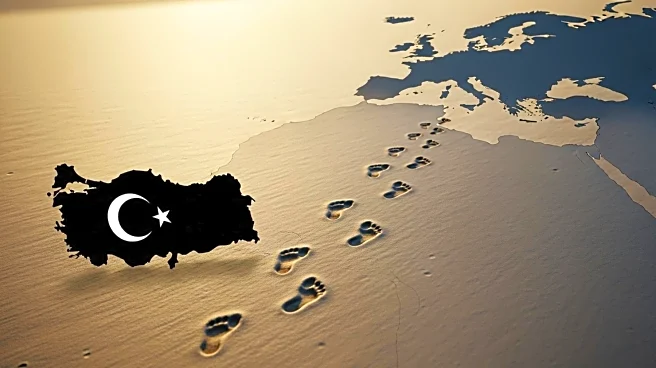What is the story about?
What's Happening?
Archaeologists in Turkey have uncovered a 5,000-year-old ritual vessel with a carved face at the Gökhöyük dig site in the Konya Plain. The discovery sheds light on the ceremonial practices of ancient civilizations in the region. The vessel, which features a face carved into its surface, is believed to have been used for ritual purposes rather than for everyday cooking or storage. This finding is part of ongoing excavations aimed at understanding the cultural and historical significance of artifacts from the Early Bronze Age.
Why It's Important?
The discovery of the ritual vessel provides valuable insights into the ceremonial practices of ancient societies in the Konya Plain. Such artifacts help archaeologists piece together the social and religious aspects of life during the Early Bronze Age. Understanding these practices can offer a broader perspective on the development of human civilization and the role of rituals in shaping cultural identities. This find contributes to the growing body of knowledge about ancient societies and their use of art and symbolism in daily life.
What's Next?
Further analysis of the vessel and other artifacts from the Gökhöyük site will continue, with archaeologists aiming to uncover more details about the rituals and daily life of ancient civilizations in the region. These studies may lead to new theories about the social structures and religious beliefs of the time. The findings could also prompt additional excavations in nearby areas to explore the extent of cultural practices across the Konya Plain.
Beyond the Headlines
The discovery highlights the importance of preserving archaeological sites and the potential for uncovering significant historical artifacts. It also raises questions about the ethical considerations in the excavation and display of ancient artifacts, particularly those with cultural and religious significance.
AI Generated Content
Do you find this article useful?














